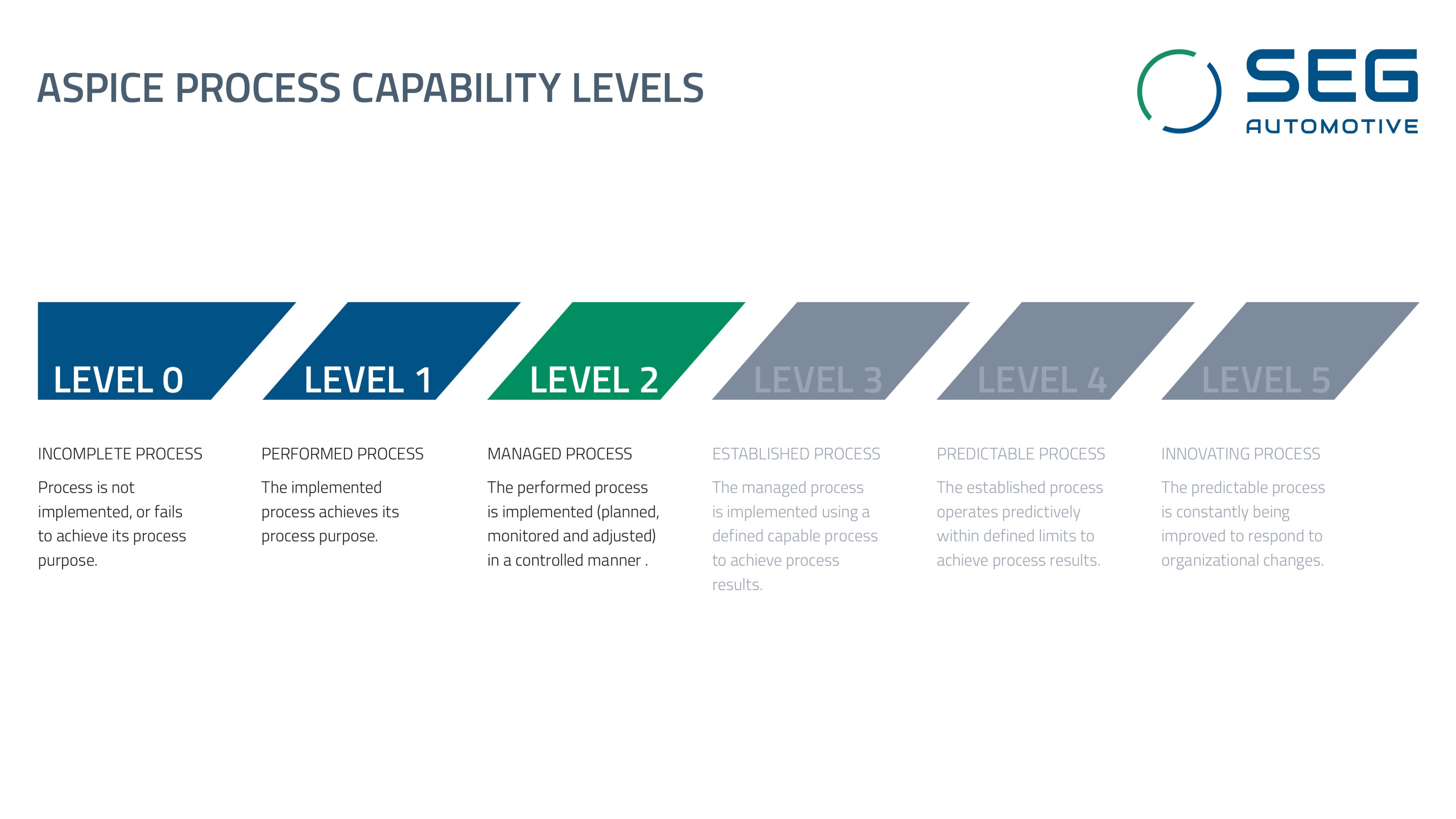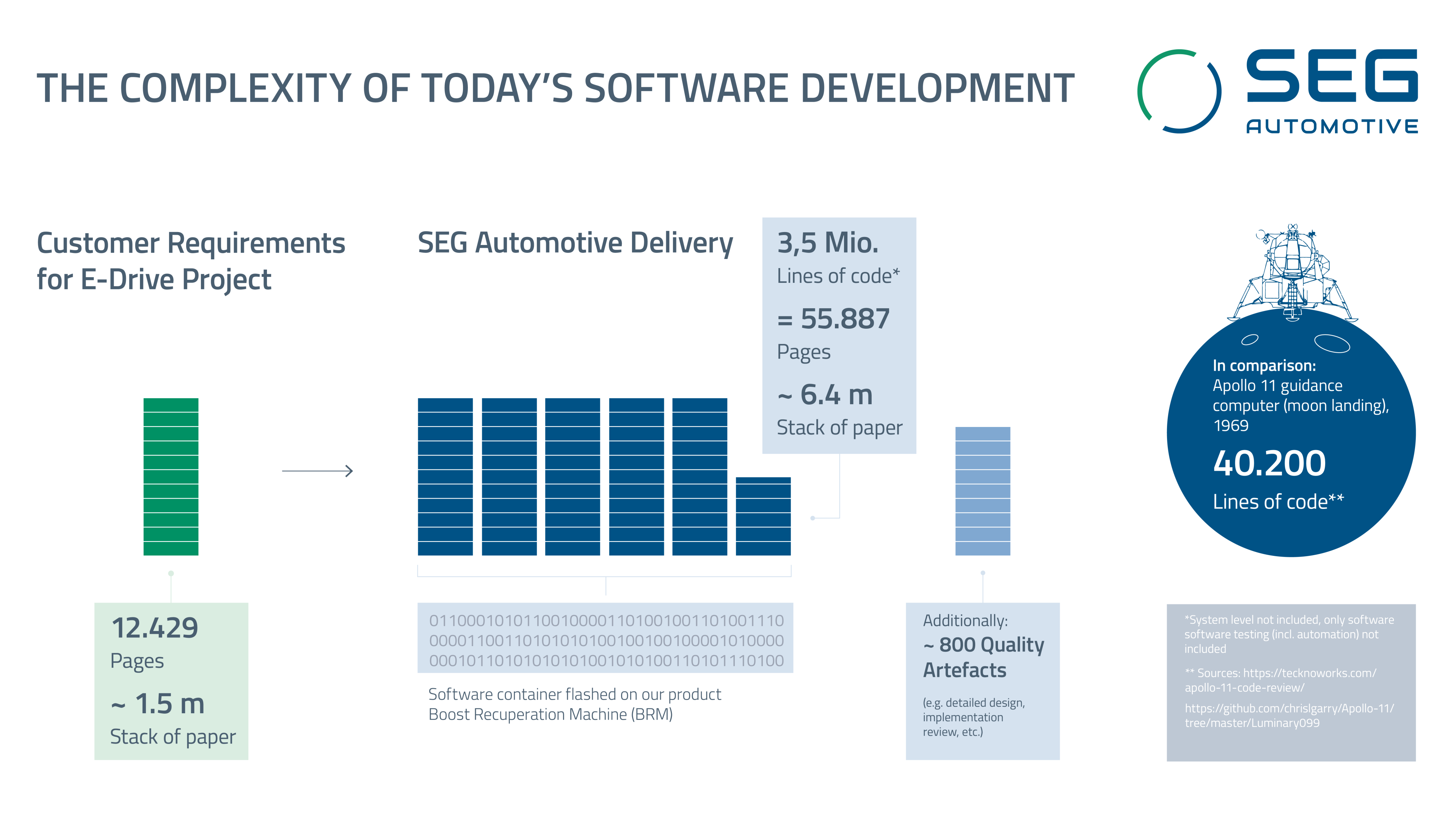SEG Automotive achieves ASPICE Level 2 in software development
As part of an e-drive project for a major German car manufacturer, SEG Automotive is one of few suppliers in the industry to achieve ASPICE Level 2. We accomplished this demanding quality level in record time before the customer's market launch (SOP).
The ASPICE assessment method, developed by leading automotive manufacturers, is becoming a standard throughout the automotive industry for reviewing suppliers' (software) development processes. Increased quality issues drive this due to increasingly complex software in vehicles – as do governmental requirements for vehicle approval in many countries, which also affect the software used and its development. Some OEMs already demand ASPICE certification, and the German Association of the Automotive Industry (VDA) has adopted it as a standard process model.

ASPICE is the adaptation of SPICE, the Software Process Improvement and Capability dEtermination (also known as ISO/IEC 15504), to the automotive industry. In 1993, the International Organization for Standardization (ISO) and the International Electrotechnical Commission (IEC) developed SPICE as an assessment method of software processes. It enables assessors to objectively determine an organization's ability to deliver software products effectively and reliably.
ASPICE accordingly defines a best practice process landscape for developing automotive software packages. Projects and concepts are designed to be manageable and produce guaranteed, dependable, predictable reliability and results. The certification ranges from level 0 (no or only partial achievement of the quality specifications) to 5 (complete mastery of the specifications and permanent optimization of the process).
In reality, implementation is highly demanding: At level 1, for example, it is not only necessary to check and fulfill every requirement for the product in the current software project, but also to exclude additional undesired functions. The requirements must be broken down to the most minor subsets and documented in a traceable manner across all process steps (traceability).
Level 2 extends the requirements to include, among other things, complete resource planning. This includes specifying precisely what is to be implemented by whom and when and demonstrating that each involved employee has the necessary competencies. In addition, risk management must be established for process deviations. While levels up to 2 refer to a specific project, from level 3 the ASPICE standard applies equally to all software projects.
Consequently, bringing the development process in line with ASPICE is complex and time-consuming. Achieving ASPICE Level 2 and fully meeting the customer requirements in the corresponding e-drive project accordingly filled SEG Automotive's team around department head Rainer Peck with pride.
What's more: Despite having to optimize and partially rebuild processes and the toolchain, we achieved level 2 in record time – and on schedule for the SOP of the well-known German automotive customer. The customer feedback for SEG Automotive was correspondingly positive.

"Achieving the quality level is one thing. Now we focus on consistently and demonstrably meeting the high requirements in the project," says Rainer Peck. "Via KPIs, we create transparency in this regard and prepare ourselves for reviews. We are also ready for future projects requiring ASPICE level 2 standards!"